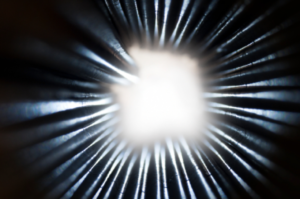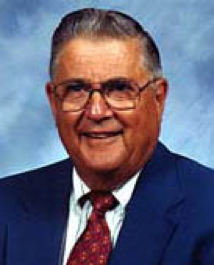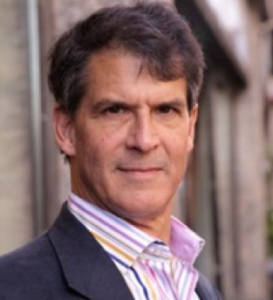Life After Death
I met Dr. George Ritchie in 1965, twenty-two years after he died of double lobar pneumonia. I was in the audience at Wesley Memorial Church in Charlottesville, Virginia, when he spoke about his death, and I met with him after his talk.
In 1943, when he was a soldier stationed at Camp Barkeley, Texas, he was hospitalized with pneumonia. An orderly found him unresponsive, with no pulse, respiration rate, or blood pressure. The doctor on duty (“O.D.”) confirmed that Ritchie was dead, and told the orderly to move the corpse to the morgue when he finished his rounds. When the orderly returned to Ritchie’s room, the O.D. examined him again and found no signs of life. By then, Ritchie had flat-lined for almost ten minutes.
In the past, the O.D. had used adrenaline shots to kick-start a heartbeat interrupted by a traumatic injury. He had never seen one revive a heart stopped by a debilitating illness, especially after so much time had passed. On a whim, he nevertheless plunged a needle into Ritchie’s heart.
To the O.D.’s great surprise, Ritchie’s heart began to beat erratically. Irregular respiration commenced. His blood pressure rose. Three days later he regained consciousness.
The hospital’s commanding M.D. said Ritchie’s recovery was “the most amazing medical case I ever encountered… (It) has to be explained in terms other than natural means.”

I was eighteen when Dr. Ritchie spoke at the church. My father became a preacher in 1960. Five years later, the power of his faith was clear to me, but I couldn’t seem to embrace it. I struggled with a boat-load of doubt. Just before I left home for college, my father asked me to attend a district youth group meeting. I tried to beg off, but he insisted.
So I sat in the audience that night as Dr. Ritchie turned to the meat of his talk – the events he claimed occurred while he was dead. The gist of it was this. His spirit (my word, not his) left his corpse. A light appeared and grew in brightness until it overwhelmed all else. Its source was a being of infinite love, whom Ritchie believed to be the Son of God. The being showed Ritchie a panorama of scenes from his life, took him to other-worldly places similar to purgatory (my word again), and then guided him to the edge of paradise. There, he told Ritchie he must go back, and Ritchie reentered his body in the hospital.

It sounds crazy as I write it here, but Dr. Ritchie wasn’t crazy. He was a practicing psychiatrist with an M.D. from the Medical College of Virginia and a psychiatric residency at UVA Hospital. He later became the Chairman of Psychiatry of Towers Hospital and President of the Richmond Academy of General Practice. Soft-spoken and articulate, he told his story dispassionately, with no hint of missionary zeal.
Today, there are thousands of reports of near death experiences (NDE’s), but Dr. Ritchie’s story was one of the earliest, and I was moved by it. At the end of the meeting, I stood at the door, hoping to speak to him. To my surprise, when he left the podium he sought me out.
“Would you like to talk?” he said. He guided me into a little room and we sat down. I asked questions about the details of his story. He answered patiently, with humor and warmth. My questions tailed off and I stared at him uncomfortably.
“Did you believe in God before this happened?” I asked.
“No.”
I paused. “Do you really think you met Jesus?”
“Yes.”
“You’re sure?”
“I’m certain.”
We fell silent. I felt greatly unsettled. He was so obviously at peace and I was not.
He put his hand on my shoulder. “You’ll be all right,” he said. “He loves you.”
He walked me out into the hall where my father waited. When he and Dr. Ritchie shook hands and exchanged knowing looks, I realized they had set me up. Dr. Ritchie’s personal attention was a favor to my dad.
I wasn’t the only one Dr. Ritchie moved that summer. One of his talks inspired Dr. Raymond Moody to spend his life investigating NDE’s. Moody’s book in 1975, Life After Life, dedicated to Dr. Ritchie, discusses Moody’s meetings with more than 150 people, who returned from a clinical death. Their stories differed, but Moody noticed some generally repeating traits. The most prevalent were an out-of-body experience, an encounter with a being of brightness, a sense of unconditional love, and a review of the person’s life.
The study of NDE’s took off after Moody’s book. The scientific community initially regarded them as fabrications, but after thousands of stories with similar patterns emerged, the reaction shifted to providing scientific rationales for them. Today, scores of peer-reviewed studies offer biological and neurological explanations.
On the other side of the debate, taking the position that NDE’s are genuine spiritual occurrences, two heavily credentialed doctors published accounts of their own NDE’s. Dr. Mary Neal, the former director of spine surgery at USC, drowned in a kayak accident in Chile. To Heaven and Back tells the story of her arduous recovery and her claim that she went to heaven.

Proof of Heaven, by Dr. Eben Alexander, was a N.Y. Times best seller for 60 weeks. His story is difficult to dismiss. He is a neurosurgeon who was educated in thecountry’s most elite institutions. He taught at Duke, Harvard, and UVA. He devoted his life to science; he did not believe in God or an afterlife; and he viewed NDE’s as pure fantasy.
Then, at age 54, he contracted E coli bacterial meningitis, a rare disease that eats the brain’s cortex. It should have killed him, and it almost did. He languished in a coma for seven days. His doctors gave up hope and recommended to his wife that she pull the plug. At that moment he regained consciousness.
He should be a vegetable today, but he recovered fully. That much is beyond astounding, but his story doesn’t end there. This formerly faithless man of science claims that he experienced a richly-detailed, lengthy encounter with God in heaven. As a leading neurosurgeon, he read his own medical charts and concluded that his brain registered no activity during his NDE, proving to him that it was not a cerebral hallucination. Consciousness exists independent of the body, he asserts.
Dr. Alexander’s claims have drawn enthusiastic critics. They generally accept the sincerity of his story and his expertise in interpreting his charts, but they argue that he could have experienced his NDE before his brain shut down or while it was coming back up, or that parts of his brain may have been intermittently active during his coma.
So what does all this boil down to? Is there reliable evidence of an afterlife?
I’m a skeptic, by nature. As with my dad’s faith, I’d like to believe, but my Inner Lawyer whispers in my ear, “We need proof beyond a reasonable doubt.”
Dr. Ritchie believed “with stupendous certainty” that he’d met the Son of God, but his sincerity isn’t proof. Dr. Alexander’s brain-wave charts come close, but there’s still wiggle room.
In researching NDE’s for this post, I was surprised by the scientific community’s intense interest in this debate. That, along with the rapid advance of medical technology, will likely provide irrefutable answers to these questions soon.
Until that day comes, my Inner Lawyer and I will continue to float along with our boat-load of doubts.
Post Script: Dr. Ritchie died for the last time in 2007 at his home in Irvington, Virginia, after a long battle with cancer. He was unafraid. “Death is nothing more than a doorway, something you walk through.” His words, not mine.



September 26, 2017 @ 10:34 pm
Certainly is a thought provoking subject. I have my own set of beliefs rooted in where I am from and how I was raised. I think the stories you relayed in your blog are fascinating and they ring true to me. As an engineer who wants tangible proof of everything it creates some internal conflict with me but I can reconcile it and am at peace.
September 27, 2017 @ 11:19 am
I have the same reaction to the subject matter. Maybe engineers and lawyers analyze issues similarly.
September 25, 2017 @ 12:13 pm
Ken, I have found this topic fascinating. Became very interested in it when my middle son passed away, reading everything I could on it. I did like Moody’s books, especially the one he did on his interviews with children. (I believe that was Moody). I have since lost a second son. I also spent some time at the Monroe Institute near Afton, where they claim out of body activity. I was not there for that , but for the depth of meditation that is achieved via sound waves . It was very convincing. So many things we do not know. Science is not the only truth. Did enjoy the blog and always look forward to the next one.
September 26, 2017 @ 9:54 am
I am so sorry about your sons. I admire your strength. It’ so hard to come through such deep loss intact, as you have.
I was also impressed with Moody’s research. As far as I can tell, he was the first to discover a loose pattern of events that occurred during the NDE’s. Many of the people he spoke to were children or adults who did not want to come forward for fear of being branded as crazy. Their stories carried more credibility, I thought. Dr. Alexander’s book is very convincing. If you haven’t read it, it’s worth your time. Last I heard, he was still living and working in Lynchburg and occasionally speaks there. Dr. Ritchie wrote several books, too, although I didn’t find them as interesting or persuasive as his talk in C’ville. In retirement, he lived about a mile from a B&B in Lancaster County where I stayed when I visited my parents, but I didn’t learn that until I wrote this article. Wish I’d known so I could have visited with him again. I agree with you that science doesn’t explain everything and we still have a lot to learn about NDE’s.
September 23, 2017 @ 6:37 am
Very interesting subject and read Ken. Thks for sharing.
September 23, 2017 @ 10:34 am
Thanks, Mike. Hope you and your family came through the storms in good shape.
September 22, 2017 @ 8:35 pm
As a person of faith, I have no problem believing that NDE are a peek into the afterlife. As I scientist, I have no problem with this belief. we would be arrogant, indeed, if we thought that we know and have discovered everything. If one believes in God, or a Creator, then one has accepted that an entity has not only created everything, but has written the laws of nature. A true miracle is when the Creator has set aside His own rules of nature to change the outcome to what He wants, not just what His laws dictates.
Vaya Con Dios!
September 23, 2017 @ 10:32 am
Thanks for your insight, Janet! Your definition of a miracle is spot on. Vaya Con Dios, indeed!
September 22, 2017 @ 5:55 pm
I’m fascinated by this… I’m in the medical field (Microbiology) and have worked in hospitals for a long time and have seen many people die. Like you, I struggle with the “afterlife”. I’m definitely going to read the books you’ve referenced!
As a footnote, I’m a dedicated fan of you and your books…
September 23, 2017 @ 10:30 am
Thanks, Carrie. Of those books, I found Dr. Alexander’s story the most compelling. Dr. Ritchie wrote several books, too, but they aren’t as effective as his face-to-face delivery of his NDE. Thanks for reading my books!